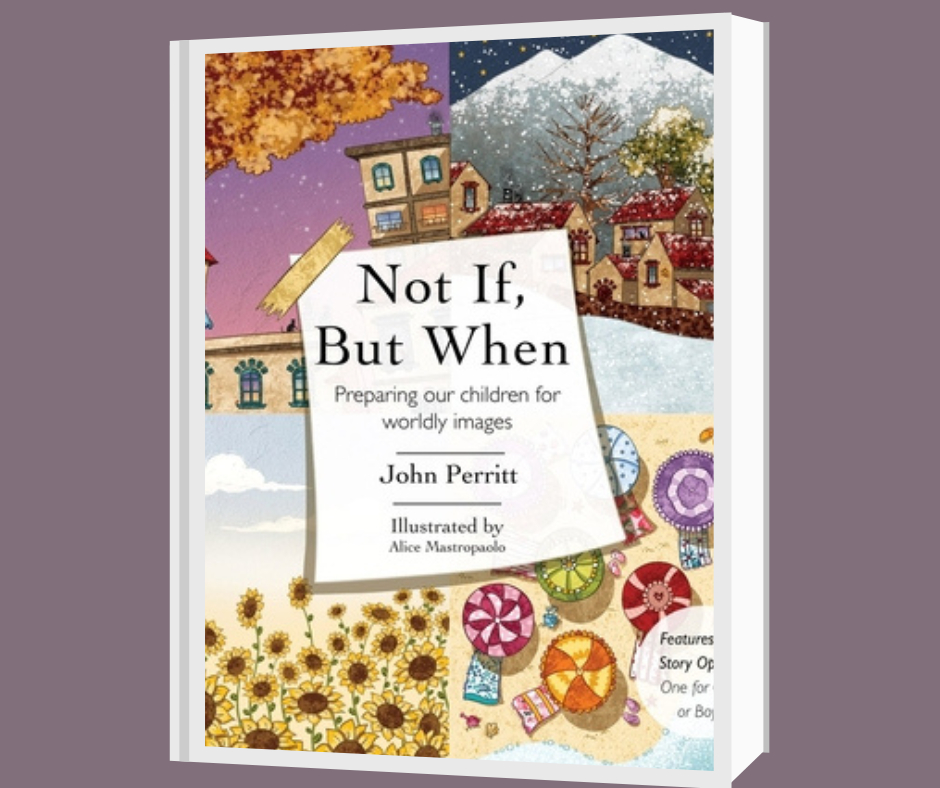Book Reviews
Not If, but When: Preparing Our Children for Worldly Images, by John Perritt | Review by Rosa Byler

When I was a teenager, the word pornography was rarely heard, either in conversation or across pulpits. I had a vague idea of its definition but no mental images. Although it could be stumbled upon by accident in attics, haylofts, or the trunks of cars, obtaining pornography generally took deliberate intent, and sources were limited. (Traveling in Europe in the early 1990s, we were astonished by the ready availability of pornographic magazines in public places still regulated in the U.S.)
In recent years, however, pornography has grown from the closet vice of a minority to a lucrative industry and the damaging addiction of a majority. It can now be pipelined into our homes by way of everyday handheld devices, and the age of the first encounter is dropping (the current estimate is eight). Even children who don’t access technology interact with those who do; one such incident prompted John Perritt to write this book.
Perritt is the father of five and a youth pastor. Two elements of the introduction piqued my immediate interest in whatever he might have to say: his use of the term “children” instead of “kids” (words not only express concepts but also help to shape perspectives); and his proactive involvement in his children’s lives, even while acknowledging the modern fear of being a “helicopter parent.”
Not If, but When looks like a children’s book: square, less than half an inch thick, and with attractive illustrations on every other page. Parents are intended to read the book alongside their children (suggested age: seven to twelve). The book covers the same topics twice, in a set of stories for girls and a slightly different version for boys. Each story includes a scripture passage, a summary of the main point, and suggestions for wording answers to “What did you learn?” It is not a facts-of-life manual—no body parts are named or reproductive processes described.
Perritt portrays human sexuality as a gift from God, accompanied by His instructions concerning proper context and timing for sexual relationships. Opening this gift too early (outside of the framework of a loving marriage) always causes trouble. Objectifying parts of the body shows disregard for human beings as whole persons, distorting and plundering God’s gift. The stories give clear biblical explanations as to why people feel guilty about their sexuality yet drawn to explore it, and why pornography is more addictive and destructive than other lusts.
The purpose of God’s gift of marriage is to illustrate His great love for the bride of Christ, the church. Pornography and other forms of immorality present a warped picture of this reality. While I thought the concept could have used a bit more theological unpacking, Perritt lays a good base. The book concludes with encouragement to those already entangled and a suggestion for further reading.
In a climate of sexual license and inappropriate outspokenness, biblical pushback is essential. Both secular and Christian sources are raising the alarm on pornography’s effects but are not being taken seriously enough: many young people think “not recycling is worse than viewing pornography” [covenanteyes.com/pornstats], and a few public voices even suggest it can be helpful to relationships.
Parents, not peers or culture, must be the first to instruct children about pornography. Too many of us are silent, finding teaching about sexuality difficult enough without venturing into the shadows of its perversions. Unfortunately, apart from fearing the power of suggestion or the inadequacy of our explanations, parents may already be experiencing addiction. Installing filters on household computers, while necessary, may cause a deceptive sense of protection (we found our own tech safeguards to have been insufficient). Conversations built on biblical foundations and structured with adequate words are the best preparation for the “worldly images” children will undoubtedly encounter. This book provides both.